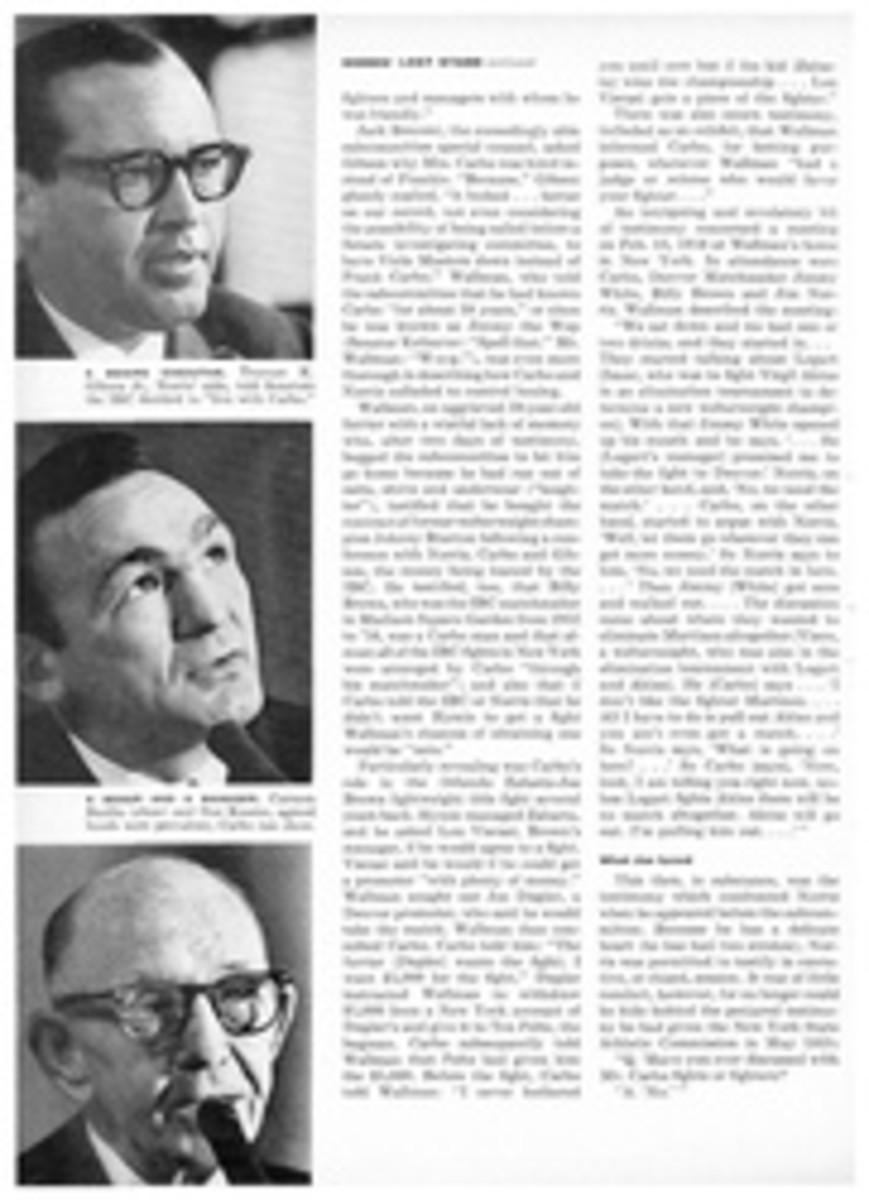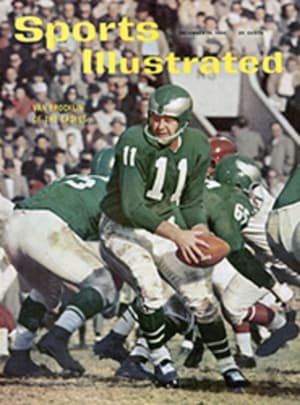
A Contest of Courage
Two half-naked men stalked each other around a sand-floored ring under the flicker of lamplight. Savage blows had smashed the larger man's face into a rubbery red pulp. Bruises dotted his ribs and his arms were knobby with welts. The smaller man's fists were lifted menacingly, although he was near exhaustion, his eyes glazed and every breath a gulp. The skin of his chest and belly was patched with wet blood.
Suddenly the larger man stepped in and landed three quick punches. His opponent slipped to the floor but managed to rise as his seconds hurried to his aid. There was sudden, brisk activity in each corner. A moment later the referee stepped to the center of the ring and, with arms raised overhead, shouted: "The fight is over. It's a draw. All bets are off."
Thus ended what may well have been one of the longest and most brutal fights in American ring history, a bare-fisted match that went an incredible 185 rounds.
The setting was appropriate for such a grueling display of courage and stamina—Virginia City, the roistering gold camp of what was then the Montana Territory. The date was January 2, 1865.
Con Orem was the smaller of the principals, son of an Ohio blacksmith, veteran professional fighter at 29, keeper of the Champion saloon in Virginia City, himself a teetotaler. His opponent was Hugh O'Neil, 34, native of County Antrim, Ireland, a muscular, whisky-drinking barroom brawler and sometime miner.
For days before the battle, Virginia City buzzed with excitement. Everyone knew that Orem weighed only 138 pounds in fighting trim, the size of a small welterweight. O'Neil was a full-fledged heavyweight at 190 pounds. Because of the 52-pound weight differential, O'Neil was a 3-to-1 favorite.
Orem's backers counted on his heart and experience. A quick, wiry bantam rooster of a man, he had fought in various parts of the East and claimed the unofficial championship of the Rocky Mountains. Also, Con Orem was a fanatic about physical conditioning.
The fight was held at J. A. Nelson's Leviathan Hall, "erected with a special view to the development of muscular talent." A lean-to was added to accommodate an overflow crowd that was predominantly male, although "the fair sex was not unrepresented." Tickets, priced at $10 for reserved seats and $5 in the pit, were on sale "at all respectable saloons."
Nelson himself was referee. The crowd gathered early. Shortly after 1:30 p.m. Nelson called the contestants together and went over the London Prize Ring rules with them. These rules provided for a finish fight and allowed a combination of boxing and wrestling. Fighters were permitted to seize their opponents and throw them down. A knockdown ended the round. The person floored had 30 seconds to "come to the scratch," that is, to toe a mark in the center of the ring and renew the contest.
The bout's first real action came in the third round. An unidentified reporter for the Montana Post later wrote: "After a little sparring, Con sent a right-handed, straight shooter heavily into Hugh's ribs a little below the arm pit, receiving a counter from Hugh, somewhat short, in a corresponding location. Con slipped to his knees, but jumping up let fly his left on Hugh's knowledge box. Hugh returned the compliment heavily with his left just below the shoulder, knocking Con, who was retiring, off his feet. First knockdown for Hugh. Loud cheers from O'Neil's friends."
Both men were badly mauled by the 50th round. Orem, with faster reflexes, had dealt out the greater punishment. O'Neil's nose dripped blood steadily and one of his eyes had begun to swell. His sides were rosy where Orem's sharp punches had scored. But O'Neil was stronger in the clinches and time and again he threw his opponent to the floor.
In the 119th round, both men stood toe to toe trading blows in mid-ring until they went down. The crowd was in a frenzy. Seconds dragged the fighters to their corners and went to work on them. Both responded to the bell, but neither could take advantage of the other's groggy condition.
By the 156th round both fighters were moving slowly. Neither had much of any defense left, but neither seemed to have enough force to take advantage of the other man's helplessness. Still, no one moved to stop the battle, and for the most part the crowd sat in awed silence.
Orem weakened rapidly, appearing almost faint at times. Rounds 180 through 183 ended with O'Neil knocking Orem to the sand almost at will. But still Orem came back for more.
In the 184th, Orem landed desperation rights and lefts to O'Neil's nose but the punches had no effect, and Orem slipped down. O'Neil walked back to his corner, and it was apparent the end was near.
Orem was little more than a punching bag in the 185th round. Under O'Neil's attack, he sank to the floor. It was then that Referee Nelson decided to call an end to the spectacle.
Oddly enough both corners protested bitterly. Orem's seconds insisted their man was able to continue. And battered and weary as O'Neil was, he could see a knockout victory almost within his grasp.
The Montana Post's reporter concluded his story with these remarks: "A gamer, harder fight was never contested in the prize ring. As for Con Orem, nothing but temperance, skill, activity and unflinching heroism enabled him to hold out against 52 pounds extra weight, backing a man who was as brave as a lion.... We are sure that no man of Orem's size or anything like it can be found in America who can whip him in a 24-foot ring.... No harder or more trying contest can ever, we venture to say, be seen here or elsewhere. We sincerely hope that such men may never meet again."

